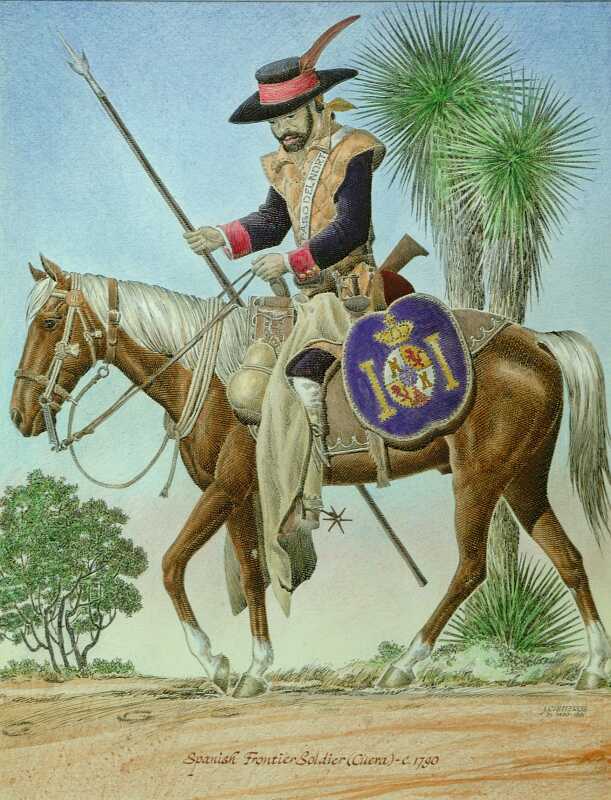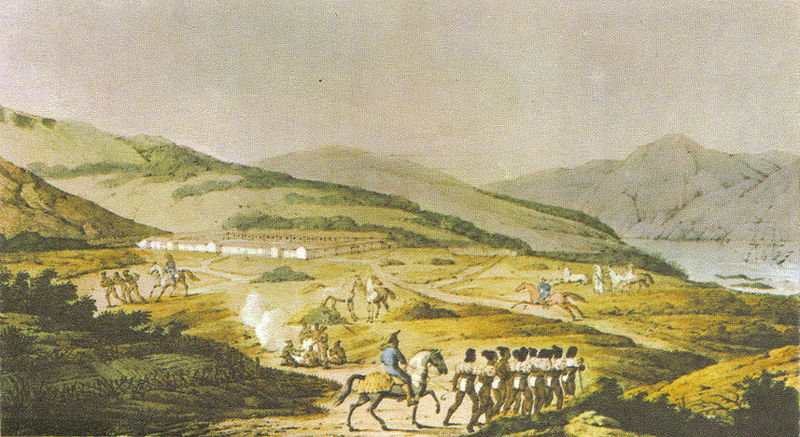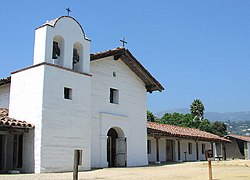As
indicated in previous posts, growing up in Southern California made
me aware of its Spanish influence. I knew of the missions but had
never heard of “presidios.” The first time I became aware of them
was during my Basic Combat Training at Fort Ord, California. [See my
earlier posts about military life.] The Special Services Office gave
guided tours for we poor recruits – the only way we were permitted
to leaved the base before graduation. On a tour to the famous Cannery
Row, the guide briefly said something about “The Presidio,” a
large, nearby, park-like area.
Then,
I was assigned to the Presidio of San Francisco. I then learned that
presidio meant a fort of some kind. If there was a museum there, I
don't remember it so I don't think I ever delved into the history of
the place. I just assumed it came from the Spanish era.
My
research into the era for Father Serra's Legacy has taught me
what they were and the important role they played in California
history.
The
above map shows the first presidio established in California located
alongside the bay in San Diego. There is very little left of this
place that never really reached a stage of building to truly
defending against an attack from the sea. It started as a place where
sick and dying Spanish soldiers were housed and from where the dead
were taken to the nearby cemetary. Over the years, even though it had
a reasonable number of soldados de cuera, the name for the
soldiers who served in the area literally meaning soldiers of leather
jackets, it was never fully manned.
Now
that you're curious, these soldiers were lancers and the jackets they
wore were of very thick layers of leather that could keep an arrow
from inflicting wounds.
As
of 1790, a census of the San Diego shows on lieutenant, commanding,
one cadet, one sergeant, 5 corporals, and 88 common soldiers with
their wives and children. Not exactly a whole lot after being in
existence for 21 years!
The
next presidio to be founded was at Monte Rey [the correct Spanish
name of the place] supposed to be the capitol of Upper California.
The capitol of both upper and lower California was in Loreto, Baja
California that didn't have a presidio!
The
above picture doesn't seem to be that accurate. It is supposedly from
Captain Vancouver's diaries or journal and the location is wrong.
First of all, the Monte Rey peninsula is forested with massive, tall
pines. Second, the presidio was close to the bay as its purpose was
to defend against a naval attack. The items in the picture DO seem to
reflect what he would have seen.
Again,
in spite of its supposed importance, the garrison never reached the
size necessary to defend it. In fact, French pirates came and simply
ignored the helpless soldiers, setting off to raid the nearby pueblo
or village.
The
next to be established was probably the most important in military
terms, the Presidio of San Francisco defending the entrance to the
huge bay.
Again,
having lived there, this so-called “historical depiction” seems
to be somewhat lacking in accuracy. The fort itself was much closer
to the water with long cannon aimed out to sea. The soldiers are not
wearing the proper uniforms and it insinuates the Miwok Indians were
being herded around like slaves. Again, another example of
“politically correct” propaganda about how badly the poor
aborigines were treated.
And
finally, the fourth presidio, the one at Santa Bárbara.
A little bit of reading lets one discover that the fort was actually
built well before the mission – very much to Father Serra's
disappointment.
Of
all the presidios, this was probably the best built and manned. It
was not meant to protect a big harbor as there really wasn't one.
But, because of winds and currents, it was a regular land fall for
Manila Galleons after their arduous voyages across the Pacific. Any
ship landing there was well-received and crews were delighted with
what the missions friars had to offer. Because of soil and climate, a
wide variety of fruits and vegetables were cultivated. Bananas. Figs.
Dates. And all of the regular fruits; apples, apricots, peaches,
oranges, lemons, limes, etcetera. And fresh vegetables. When
Vancouver landed there during one of his voyages, the friar from
Mission San Buenaventura brought up a small flock of sheep for
provisioning the two ships under his command.
Like
all of the presidios – and missions – this fell into disrepair
when Mexico gained its independence from Spain and took over
California. The above picture was taken in 1880, well after the
arrival of Americans and California's inclusion in the United States.
I'm
posting it so you can see an example of a building made of adobe with
the tile roof.
I
hope you enjoy this and my other posts as much as I've enjoyed
gathering the information. Until next time – and I have no idea
what it will be about!






No comments:
Post a Comment